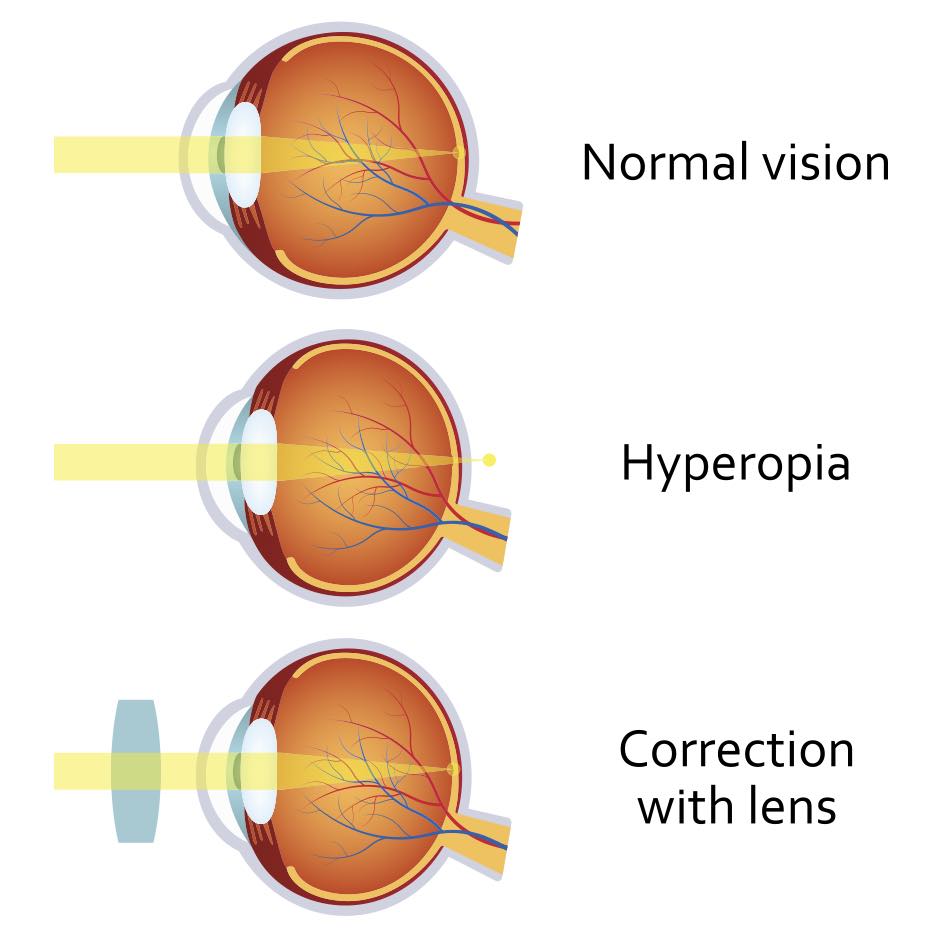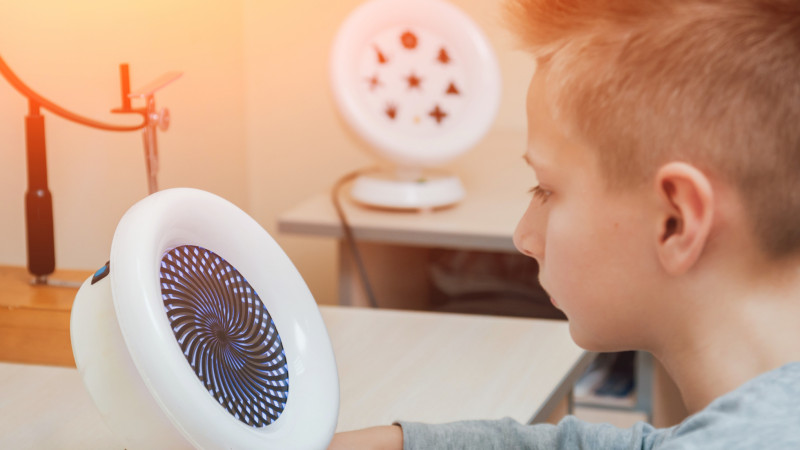Hyperopia (long sightedness)
Hyperopia (also known as long or far-sightedness) is an eye condition where objects in the distance are seen clearly, however the eyes find it difficult to focus on objects up close.
What is hyperopia?
Hyperopia is a common vision problem, where the eyes are most relaxed and work the best when viewing distant objects, and need to work much harder to be able to see objects up close.
It is a refractive error that can be corrected through various treatments such as prescription glasses or contact lenses.
Mild long-sightedness requires a person to work twice as hard (double focus) when reading at a short distance. An inability of the eye muscles to cope with the added stress results in poor word definition and impaired reading.
Poor near or close visual efficiency causes:
-
Eye discomfort
-
Inattention
-
Task avoidance
-
Poor reading comprehension
-
Reduced reading fluency
What causes hyperopia?
Long sightedness (hyperopia) occurs when the shape of the eye is shorter than normal or the cornea is shaped too flat. This results in light rays entering the eye focus beyond the retina, where usually they would focus directly onto the retina.
Research suggests that hyperopia is a hereditary condition, impacting the growth of the eye. This is why some children may grow out of hyperopia as they grow and their eyes develop - as the shape of the eye can lengthen however this is not the case for everyone.

Symptoms of hyperopia
Depending on how old you or your child is, the symptoms of long-sightedness can vary. For example, if your child is younger, they often don't report any symptoms as they don't often realise they have poor vision. Whereas, an older child (or adult) can verbalise and explain an eye strain, headaches, poor visual stamina or sore eyes when reading a book or looking up close. A child may be less interested in reading because of the strain it causes, and parents and/or teachers may notice issues with school work.
Some common signs of long-sightedness include:
- Eye rubbing
- Headaches
- Red and/or watering eyes with concentration
- Squinting
- Excessive blinking when looking up close
Treatment for hyperopia
Treatment of hyperopia, or long-sightedness, often involves correction with glasses or contact lenses. As the eye's focusing ability is different when looking far away compared to looking up close, often different powers are needed for different viewing distances. In this instance, a bifocal or progressive lens is prescribed.
Regardless of the visual condition, glasses can't be worn too often, so if you or your child prefers to leave the glasses on all day, this is perfectly safe. You don’t become dependent on glasses by wearing them too often, nor does the eyesight get worse through the use of glasses or spectacles.
Prevention is key
It’s important to seek vision treatment if you or your child think you/they might be suffering from hyperopia. If left untreated, hyperopia can be very distracting and cause difficulties, especially for children who are trying to learn.
During a comprehensive eye examination, conditions such as hyperopia are able to be detected and diagnosed by the optometrist. From there, the optometrist will work out the best treatment plan for you or your child.

Book an appointment
If your child’s struggling with learning and/or concentration at school or if you/your child are experiencing or complaining of blurry vision, eye strain or any other visual problems, it’s important to see an optometrist as soon as possible. Early detection of hyperopia (or another eye problem) is key, so you can start the necessary treatment right away and ensure you/your child can have the best vision possible.
FAQs
Can you prevent hyperopia? No, unfortunately not as it’s caused by the shape of the eye - and that the eyeball is too short.
Can hyperopia be cured? Hyperopia can be corrected with treatments such as prescription eyewear and contact lenses, however it cannot be cured.
What is the most common age for hyperopia? Hyperopia usually begins at a young age, with symptoms being evident as children start school.
How can I encourage my child to wear prescription glasses?
- Start a positive conversation about the benefits
- Talk about the improvements your child will experience with the new glasses, i.e. movies will be clearer, schoolwork will be easier, handwriting will become neater, he/she will be able to read for longer periods etc..
- Build confidence one step at a time. Start off with just 15 mins a day and build up until it becomes the new normal. Try to encourage tablet/TV time with glasses or introduce a rewards system.
There’s a lot of great books available that feature characters with glasses also - from Dr Seuss, Charlie and Lola to Peppa Pig, for example. You could introduce your child to one you think would interest them and show them how common it can be to wear glasses.


